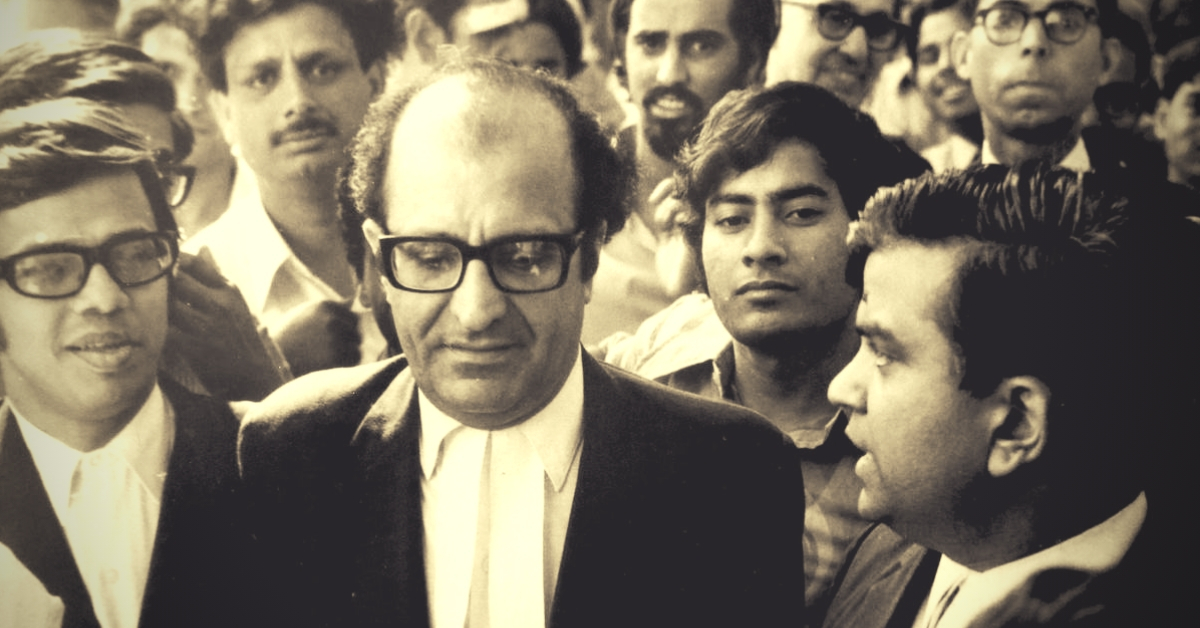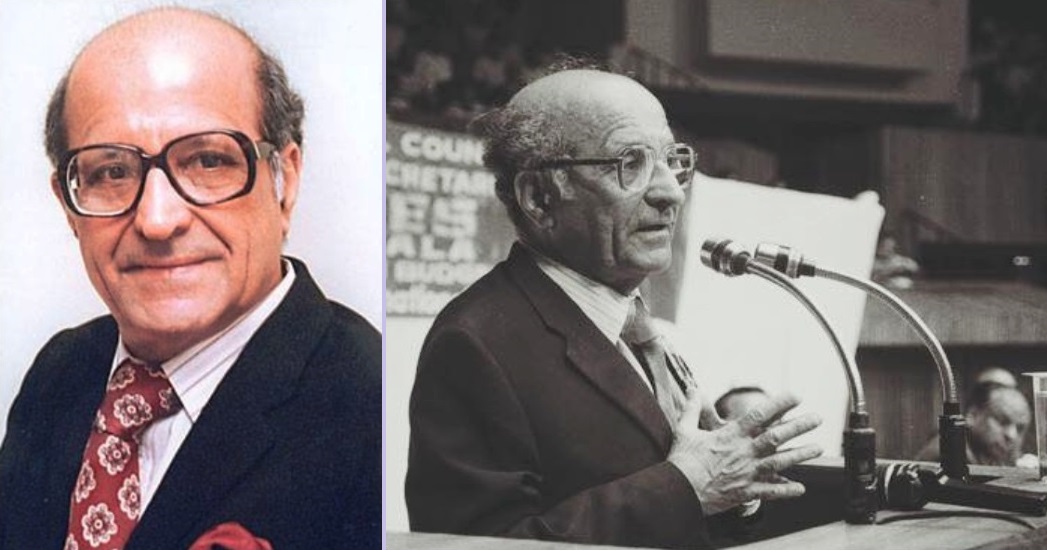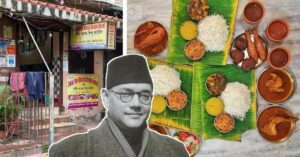Republic Day: Meet Nani Palkhivala, The Legendary Lawyer Who Saved Our Democracy
Without his fearless battles with the governments of his day, many of our Fundamental Rights would perhaps be long gone.

In his treatise on political theory ‘Hind Swaraj’, Mahatma Gandhi heavily criticised lawyers for being instruments of British colonial rule and sucking the lifeblood of the poor.
A strange criticism considering Gandhi was once a lawyer and built his credentials on the basis of not just original political ideas, but also a real understanding of British colonial law.
“The lawyers… will, as a rule, advance quarrels, instead of repressing them… It is within my knowledge that they are glad when men have disputes. Petty pleaders actually manufacture them. Their touts, like so many leeches, suck the blood of the poor people,” he wrote.
In no way does this description apply to Nanabhoy “Nani” Ardeshir Palkhivala, the legendary 20th-century jurist and self-taught economist.
Palkhivala fought some of the most crucial battles in Indian constitutional history defending among other things the Fundamental Rights of ordinary citizens.
“Political freedom and civil liberty are the keystones of the Indian Constitution. Our Constitution is primarily shaped and moulded for the common man. The only persons who would be disappointed with our Constitution are those who believe in outdated ideologies which can only result in levelling down and not levelling up,” he once wrote in a 1971 column, defending the Right to Property.
Also Read: Just Bought a Home? Here’s Why A Debate in 1950 Means You Can Be Evicted in 2019
Born on January 16, 1920, Nani Palkhivala grew up in a middle-class Parsi household. Graduating from St. Xavier’s College in Bombay (now Mumbai), he excelled in academics although he struggled with a speech impediment.
Unable to find work as a lecturer in Bombay University after his Master’s in English literature, he enrolled at the Government Law College, Bombay, where he found his true calling in life.
Nani Palkhivala rose high in the profession, arguing cases in commercial and tax law. Besides fighting a multitude of cases, he also wrote ‘The Law and Practice of Income Tax’ alongside Sir Jamshedji Behramji Kanga, a senior lawyer of repute, by the time he was 30 years old.
More than six decades later, the book is still a point of reference for tax professionals in India.
In May 1954, Nani Palkhivala fought his first case of serious constitutional significance in the Bombay High Court concerning the interpretation of Article 29(2) and Article 30, challenging a circular issued by the then State of Bombay.
Article 29(2) prohibits discrimination in matters of admission into educational institutions on grounds only of religion, race, caste, language or any of them, while Article 30 upholds the right of the minorities “to establish and administer educational institutions.”
As per the circular, “no primary or secondary school shall from the date of the order admit to a class where English is used as the medium of instruction any pupil other than a pupil belonging to a section of citizens the language of which is English namely, Anglo-Indians and citizens of non-Asiatic descent.”
Standing for the Barnes High School, an Anglo-Indian school which received aid from the government, Palkhivala argued that the order violated Article 29(2) and 30. He won the case in court and even defeated a challenge issued by the State of Bombay in the Supreme Court.
Palkhivala was a man who revered the Constitution of India and the principles it stood for.
“The Constitution was meant to impart such a momentum to the living spirit of the rule of law that democracy and civil liberty may survive in India beyond our own times and in the days when our place will know us no more,” he once said.
Although, through the course of his career, he fought 140 prominent cases according to Maj Gen Nilendra Kumar, author of ‘Nani Palkhivala: A Role Model‘, the one which will forever stand the test of time is the famous Kesavananda Bharati vs. The State of Kerala case in the Supreme Court.

Through its very first amendment to the Constitution, the Parliament had added the Ninth Schedule of the Constitution, under which certain laws were beyond the scope of judicial review.
The Jawaharlal Nehru government essentially established it with the objective of preventing the judiciary from interfering with its land reforms.
With the Right to Property still a fundamental right at the time, many attempts at land reforms by the government were met with a judiciary which upheld that particular right of the citizen.
This particular case, however, was between Swami Kesavananda Bharati, who ran a Hindu mutt in Kasargod district, Kerala, and the State government, which under two state-led land reform acts, sought to impose restrictions on the “management of his property.”
Palkhivala defended the Swami asking him to file his petition under Article 26 of the Constitution, “concerning the [Fundamental] right to manage religiously owned property without government interference.”
In a landmark judgement issued by the Special Bench of the Supreme Court comprising of 13 judges, the court ruled that Article 368 (which confers the right to amend the Constitution upon the Parliament) “does not enable Parliament to alter the basic structure or framework of the Constitution” by a slender 7-6 margin.
It is the judgement, which gave birth to the “the basic structure” doctrine, under which, “basic features,” are the fundamental rights granted to individuals, among other provisions.
“His [Palkhivala’s] firm belief was that [the] Parliament’s amending power is not absolute, the amending power is subject to inherent and implied limitations which do not permit Parliament to destroy any of the essential features of the Constitution and thereby damage the basic structure of the Constitution,” writes Maj Gen Nilendra Kumar.
It is a belief which the Supreme Court upheld. This is the case which saved Indian democracy.
The judgement was “a salutary check” on Parliament’s tendency to “encroach upon fundamental rights,” adds Maj Gen Nilendra Kumar. Credit for the judgement must got to Kesavananda Bharati, Palkhivala and the seven judges who were in the majority
It’s evident that Palkhivala wasn’t afraid of taking on the government.
During the period of Emergency, Palkhivala and a group of lawyers fighting cases of civil liberties went to the Supreme Court on November 10, 1975. They challenged its proclamation and suspension of all Fundamental Rights.
Only days earlier, he had agreed to defend Indira Gandhi, who challenged the Allahabad High Court order that had declared her election to the Lok Sabha in 1971 void. Following the announcement of the Emergency, Palkhivala returned her brief.
For two days, Palkhivala and his band of lawyers challenged the Centre’s application to the Supreme Court to reverse the Kesavananda Bharti judgement. Such was the force of his arguments that four out of the five judges on the bench agreed with him.

When left in a minority of one on November 12, Chief Justice AN Ray dissolved the bench. Before this judgement, he had unsuccessfully challenged the Indira Gandhi government’s erroneous policy decision to nationalise banks in 1969.
The Indian banking sector continues to suffer the consequences of bank nationalisation.
He also unsuccessfully challenged the government’s midnight executive order de-recognising the Privy Purse provisions issued by the Constituent Assembly for royal families as part of their agreement to merge their erstwhile kingdoms with the Indian Union. The order also de-recognised their existing titles.
“The survival of our democracy and the unity and integrity of the nation depend upon the realisation that constitutional morality is no less essential than constitutional legality. Dharma (righteousness; a sense of public duty or virtue) lives in the hearts of public men; when it dies there, no Constitution, no law, no amendment, can save it,” said Palkhivala.
Also Read: How Secular Should we be in 2019? Here’s How India of 1950 Answered That Question
Having said that, other significant successes followed, notably the Bennett Coleman & Co. vs Union of India case in 1972, where he defended the proprietors of the Times of India from harassment by the Union government, which sought to stifle dissenting views against regime emerging in the newspaper.
In a strategy to muzzle the newspaper, the Centre had issued strict import controls on newsprint. Defending the right to free speech and expression, he said, “Newsprint does not stand on the same footing as steel. Steel will yield products of steel. Newsprint will manifest whatever is thought of by man.” He won that case.
For a brief while Nani Palkhivala also served as India’s Ambassador to the United States during the Janata Party government from 1977 to 1979.
The prestigious Princeton University said “he [Nani Palkhivala] has courageously advanced his conviction that expediency in the name of progress, at the cost of freedom, is no progress at all, but retrogression. Lawyer, teacher, author, and economic developer, he brings to us as Ambassador of India intelligence, good humour, experience, and vision for international understanding….”
That’s the man we have paid tribute to today.
(Edited by Gayatri Mishra)
Like this story? Or have something to share? Write to us: [email protected], or connect with us on Facebook and Twitter.

Similar Story

Netaji Bose’s Favourite Eatery Has Been Serving Traditional Delicacies for Over 100 Years
The Swadhin Bharat Hindu Hotel in Kolkata, started by Mangobindo Panda, is a century-old pice hotel where Indian freedom fighters like Netaji Subhas Chandra Bose would enjoy Bengali delicacies.
Read more >
If you found our stories insightful, informative, or even just enjoyable, we invite you to consider making a voluntary payment to support the work we do at The Better India. Your contribution helps us continue producing quality content that educates, inspires, and drives positive change.
Choose one of the payment options below for your contribution-
By paying for the stories you value, you directly contribute to sustaining our efforts focused on making a difference in the world. Together, let's ensure that impactful stories continue to be told and shared, enriching lives and communities alike.
Thank you for your support. Here are some frequently asked questions you might find helpful to know why you are contributing?


This story made me
-
97
-
121
-
89
-
167












